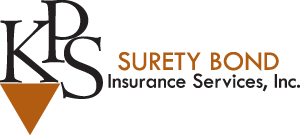 Over the past several years the construction industry has been going strong with plentiful amounts of work available. With this growth come the routine challenges of personnel, infrastructure, cash flow, etc… While all of these challenges are items you see and face everyday, another challenge may be growing that you need to be aware of as well – the day your deferred taxes come due!
Over the past several years the construction industry has been going strong with plentiful amounts of work available. With this growth come the routine challenges of personnel, infrastructure, cash flow, etc… While all of these challenges are items you see and face everyday, another challenge may be growing that you need to be aware of as well – the day your deferred taxes come due!
With a large number of construction companies being S corporations, the deferred tax liability is not being accounted for on the balance sheet. As a result this potential liability can be easily disregarded. Without being informed of this liability the impact of this payment coming due could cause a significant impact on business activities.
Being a C-Corporation takes a measure of this risk out of the equation as the building liability is shown on the balance sheet. Cash flow still needs to be available at the time payment comes due but at least the dollar figure is known.
Not only do you need to track the dollar liability that is growing but you need to understand when deferred taxes come due. For S Corporations, construction companies can account for taxes using the cash, completed, or the accrual method of accounting to pay taxes until such time as your three year average revenues on your tax returns exceed $10,000,000. At that time, your deferred taxes come due and future taxes are paid on the percentage of completion method of accounting.
For C Corporations you can pay taxes on the cash method as long as your three year average revenue on your tax return is under $5,000,000. At this level your deferred taxes come due and you can then elect to use the completed or accrual method until such time as your three year average revenue on your tax return exceeds $10,000,000. Again, at that time, your deferred taxes come due and you pay future taxes on the percentage of completion method of accounting.
Clearly the impact of this mounting tax liability could be disastrous. Working with a knowledgeable construction oriented CPA can help you manage this risk and stay on top of the building liability.
You can always use the percentage of completion method of accounting at any size but there are advantages to using other methods while you can. However, you need to stay on top of when conversions occur and how much you owe.
It is also important that your surety partner knows your accumulating liability and is comfortable you have a plan to deal with the taxes. If left to the surety company, they will estimate your deferred tax liability. Typically this is a conservative estimate meaning they will add a liability to your balance sheet that is larger than what is realistic. This will result in a reduction of both your equity and potentially working capital depending on whether your surety considers this liability a current or long term liability.
Without information from you and your CPA an easy way for your surety to account for this liability is to take your 1120S tax return and compare the retained earnings shown to what is shown on your CPA percentage of completion year end financial statement. They can then take that difference and multiply it by 34-40% to come up with a conservative deferred tax liability.
There are a couple easy way to counteract this conservative approach to estimating deferred tax liabilities. Your CPA can put a note in your financial statement showing what your deferred tax liability would be if you were a C Corporation. If you don’t want to do that you can have your surety either talk to your CPA or have your CPA provide a letter detailing the deferred tax amount and when it may be coming due.
The big thing with your surety company is communication. Keep them informed with your plan to deal with this deferral. It will give them a higher degree of confidence in your business management abilities and provide a higher level of comfort moving forward.
